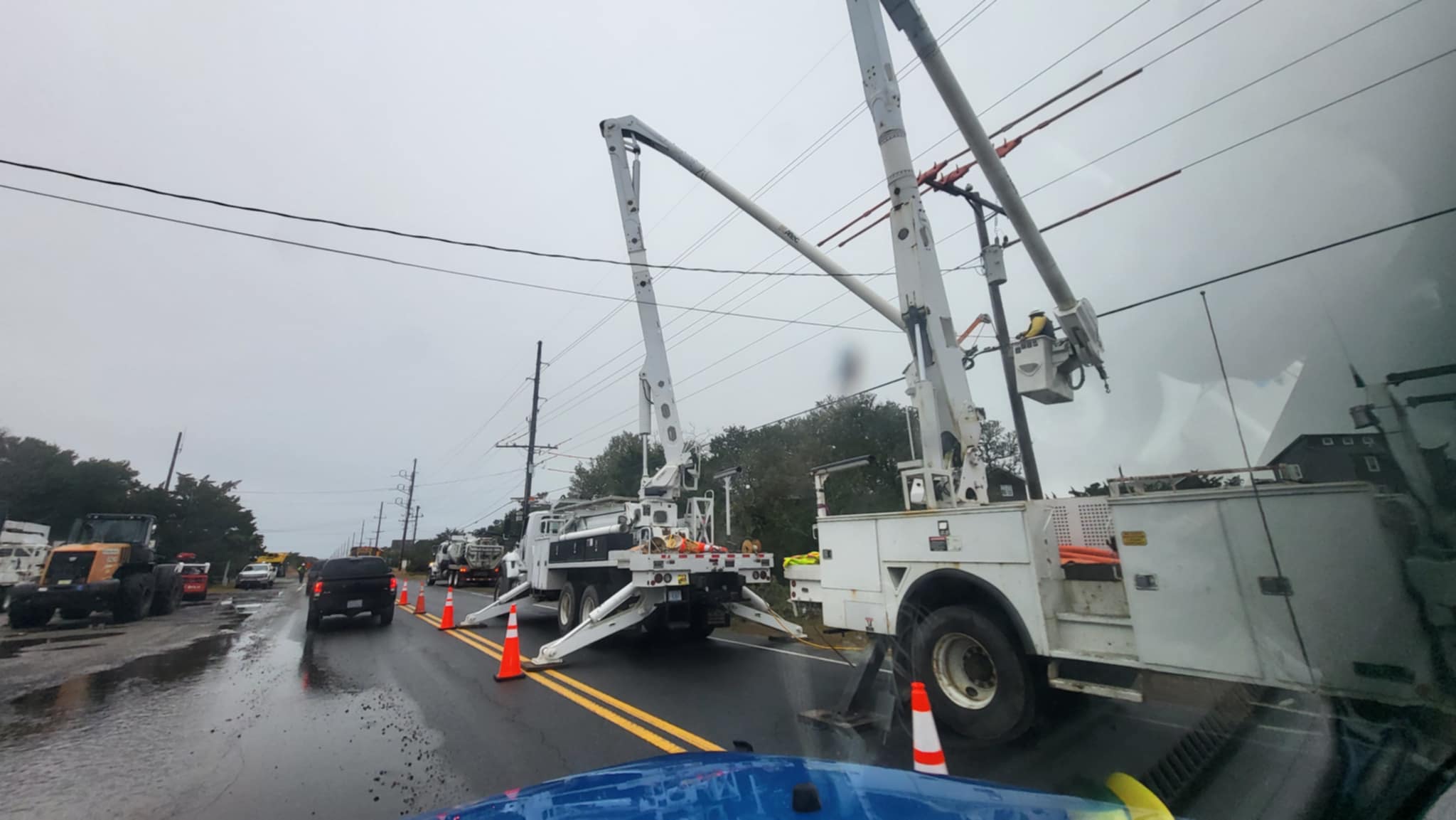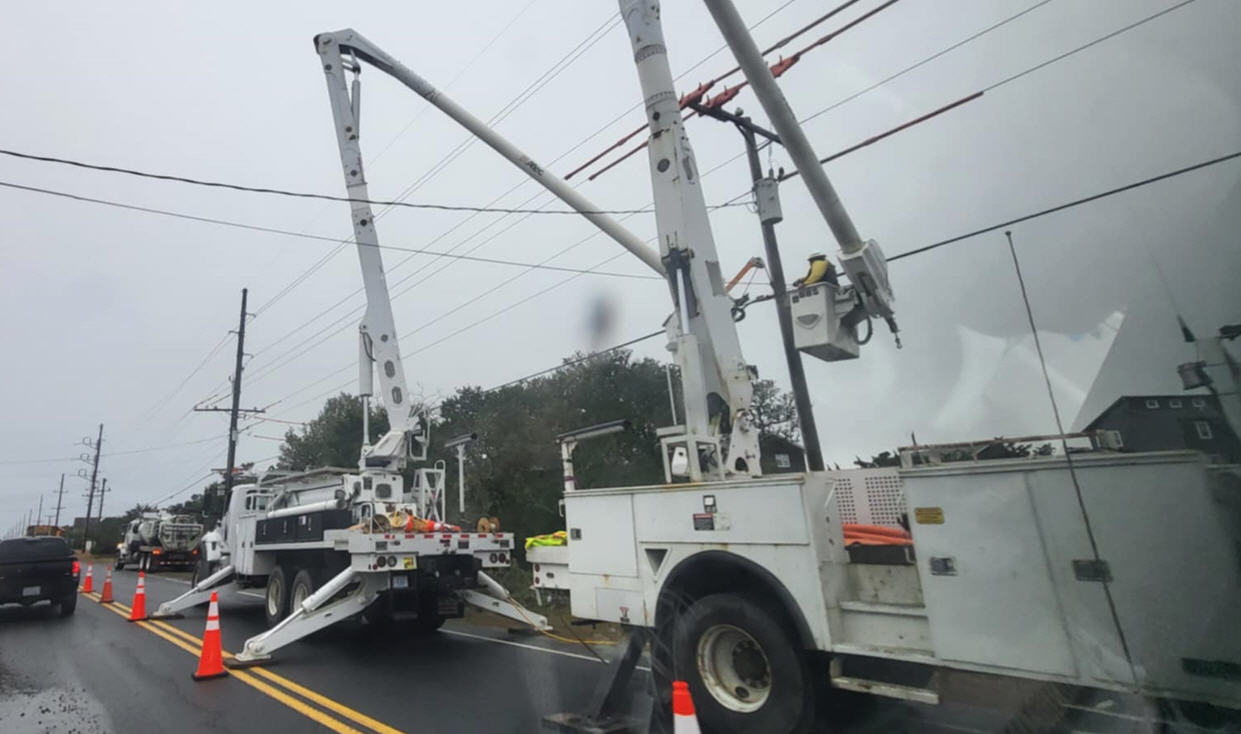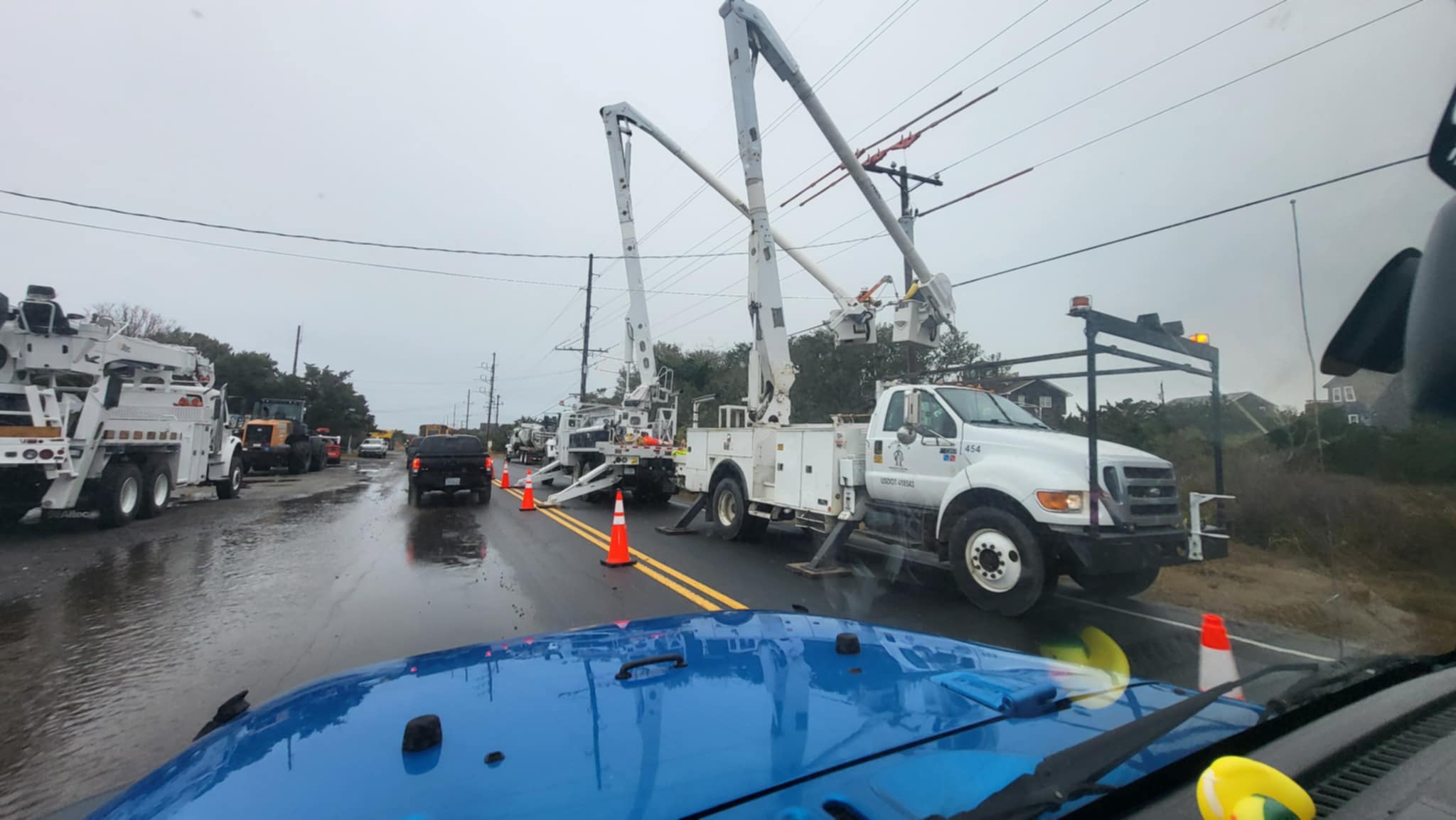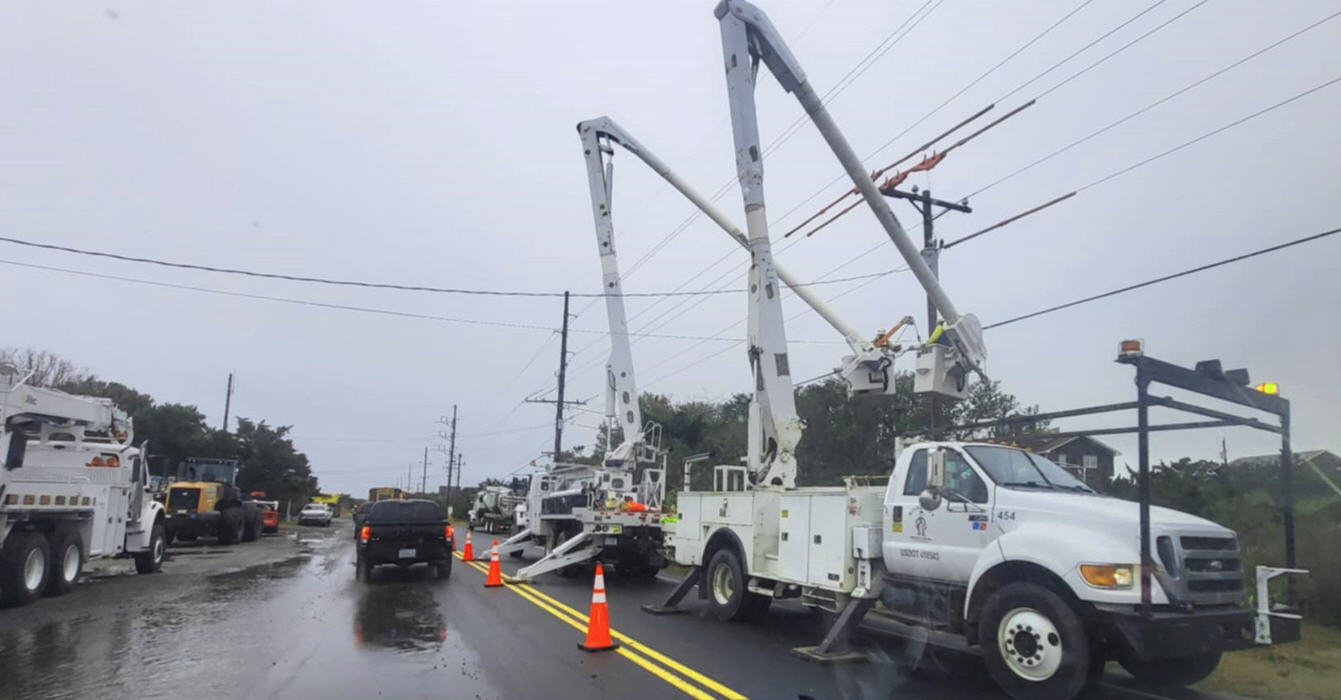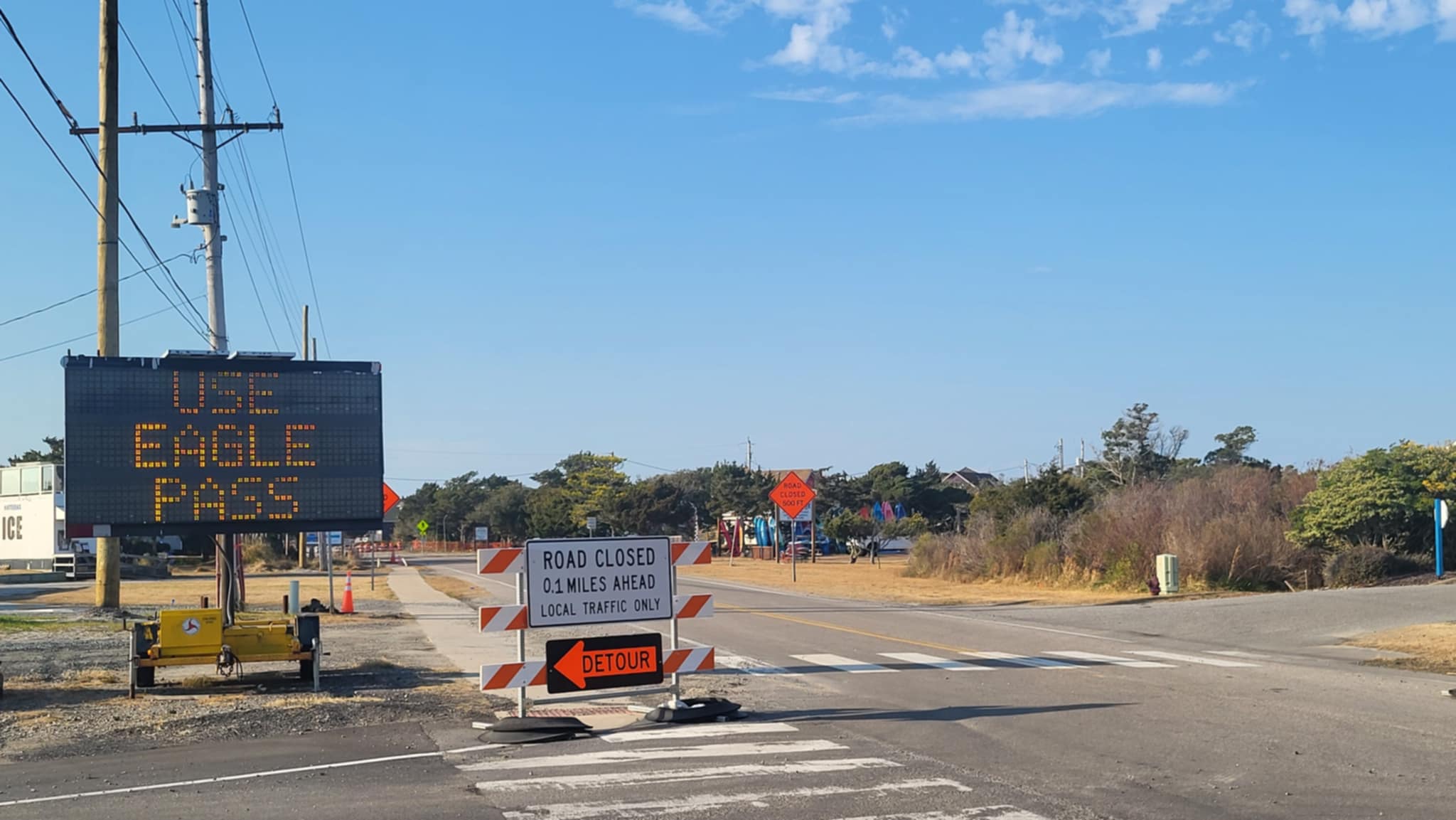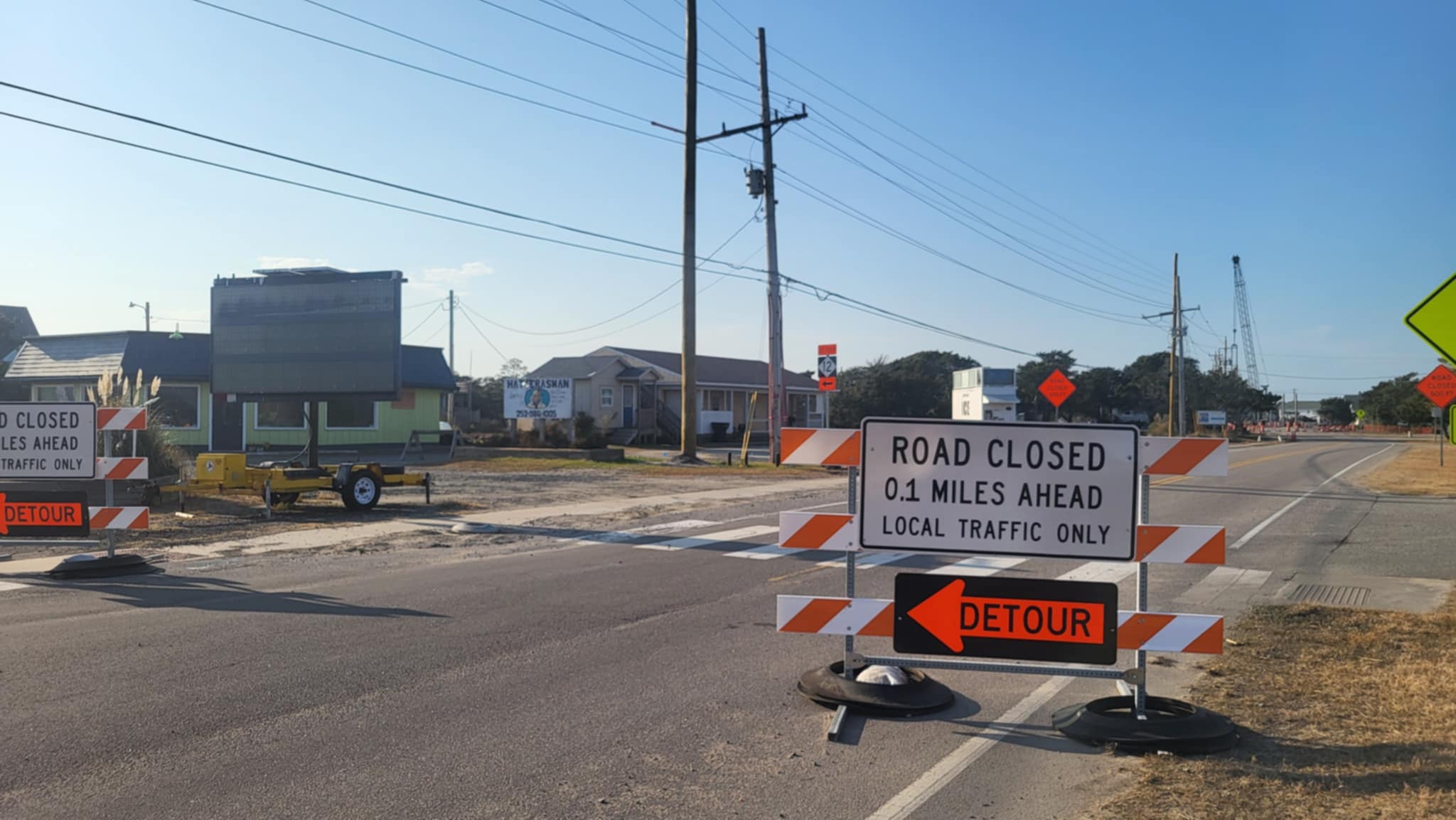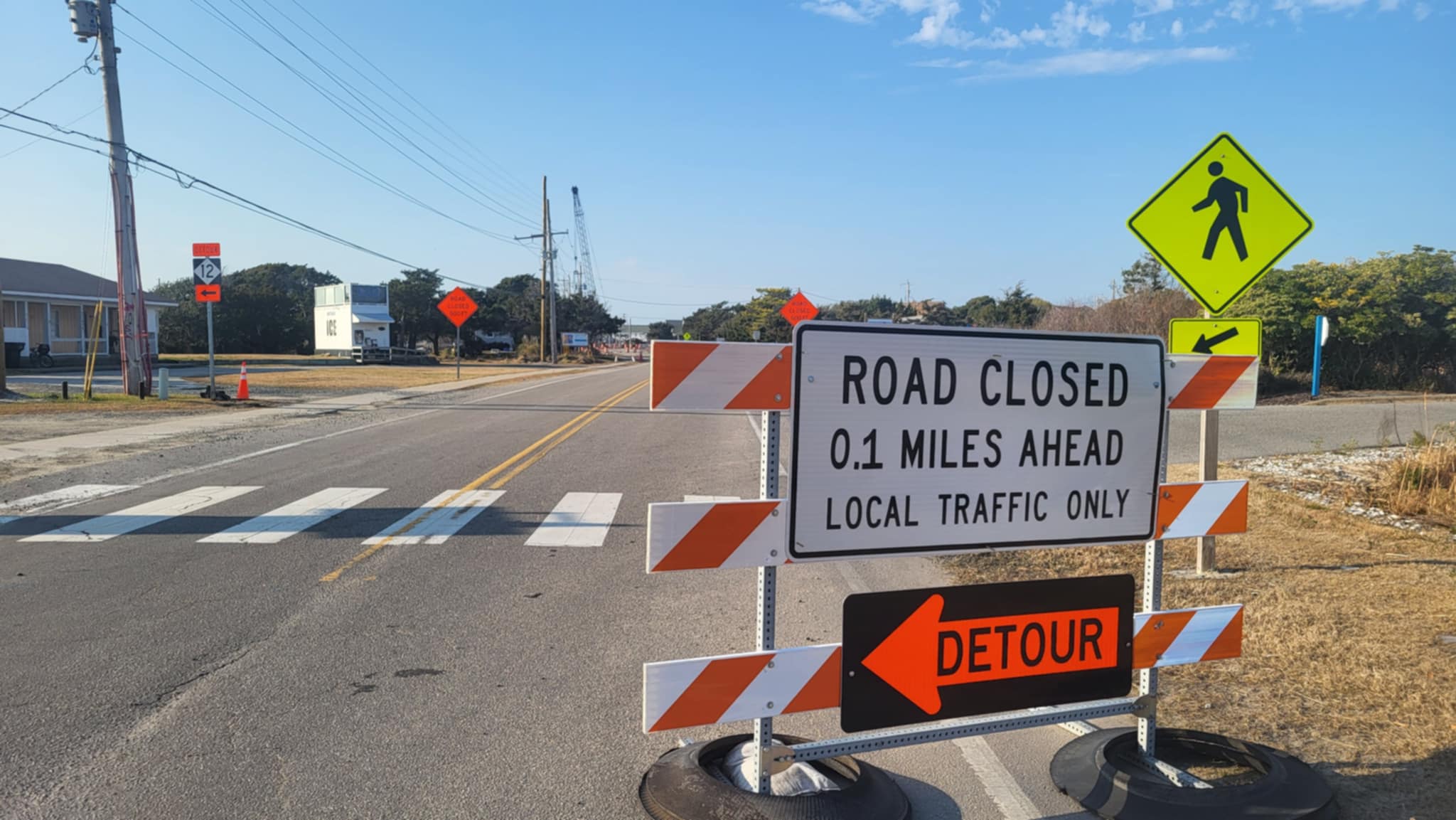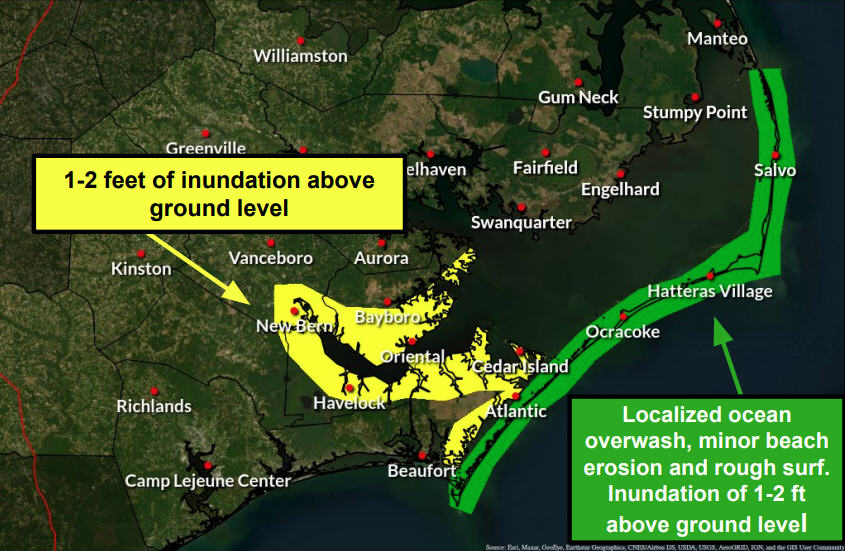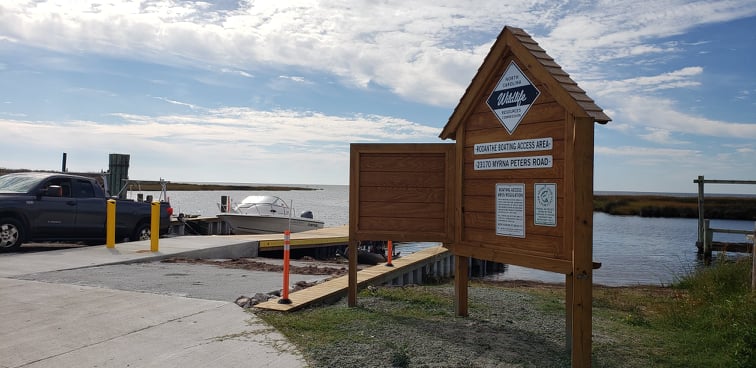Tropical Storm Alberto forms off South Carolina and is forecast to move north By IRENE NOLAN
By IRENE NOLAN
By IRENE NOLAN
The season’s first tropical storm developed Saturday afternoon off the coast of South Carolina – 13 days before the official start of the hurricane season on June 1.
After a day or so of meandering off the South Carolina coast, Tropical Storm Alberto is forecast to move north and northeast and pass offshore just south and east of Cape Hatteras on Tuesday afternoon or evening.
At 11 p.m. Saturday night, Alberto was 120 miles south of Cape Fear in southern North Carolina with winds of 50 mph. The storm was moving southwest at 6 mph, and the barometric pressure was 998 mb. The National Hurricane Center says that some strengthening is possible.
A low pressure off the North Carolina-Virginia border is forecast to push the storm a little further south and west on Sunday. That low will move onshore, bringing showers and thunderstorms to the Outer Banks on Sunday, and then will dissipate, allowing Alberto to move north and then northeast.
However, the steering currents are weak, and currently the forecast tracks are not in agreement about how close the storm will come to the Outer Banks.
“There is still a lot of uncertainty about the track,” Casey Dail, a forecaster at the National Weather Service in Newport, N.C., said early this morning.
Dail said the Weather Service right now expects it to be mostly a coastal storm with wind and heavy seas — and a 20 percent change of tropical storm force winds at Hatteras.
Alberto is a small, compact storm now, so a slight change in the path could make a difference for the Hatteras and Ocracoke forecast.
Alberto is the earliest-forming tropical storm in the Atlantic since 2003 when Ana developed in April. This is also the first time on record that both the Atlantic and eastern Pacific have seen named storms develop before the official start of their respective seasons.
According to the Weather Channel, Alberto is only the 23rd pre-June named storm in the Atlantic Basin, in records dating to 1851. Only four of those named storms have strengthened to hurricanes. The last April or May named storm to do that was Hurricane Alma in 1970. Only one of these hurricanes became a major hurricane, Category 3 Hurricane Able in 1951.
For the latest updates, go to http://www.erh.noaa.gov/mhx/downloads/briefings/
The season’s first tropical storm developed Saturday afternoon off the coast of South Carolina – 13 days before the official start of the hurricane season on June 1.
After a day or so of meandering off the South Carolina coast, Tropical Storm Alberto is forecast to move north and northeast and pass offshore just south and east of Cape Hatteras on Tuesday afternoon or evening.
At 11 p.m. Saturday night, Alberto was 120 miles south of Cape Fear in southern North Carolina with winds of 50 mph. The storm was moving southwest at 6 mph, and the barometric pressure was 998 mb. The National Hurricane Center says that some strengthening is possible.
A low pressure off the North Carolina-Virginia border is forecast to push the storm a little further south and west on Sunday. That low will move onshore, bringing showers and thunderstorms to the Outer Banks on Sunday, and then will dissipate, allowing Alberto to move north and then northeast.
However, the steering currents are weak, and currently the forecast tracks are not in agreement about how close the storm will come to the Outer Banks.
“There is still a lot of uncertainty about the track,” Casey Dail, a forecaster at the National Weather Service in Newport, N.C., said early this morning.
Dail said the Weather Service right now expects it to be mostly a coastal storm with wind and heavy seas — and a 20 percent change of tropical storm force winds at Hatteras.
Alberto is a small, compact storm now, so a slight change in the path could make a difference for the Hatteras and Ocracoke forecast.
Alberto is the earliest-forming tropical storm in the Atlantic since 2003 when Ana developed in April. This is also the first time on record that both the Atlantic and eastern Pacific have seen named storms develop before the official start of their respective seasons.
According to the Weather Channel, Alberto is only the 23rd pre-June named storm in the Atlantic Basin, in records dating to 1851. Only four of those named storms have strengthened to hurricanes. The last April or May named storm to do that was Hurricane Alma in 1970. Only one of these hurricanes became a major hurricane, Category 3 Hurricane Able in 1951.
For the latest updates, go to http://www.erh.noaa.gov/mhx/downloads/briefings/
The season’s first tropical storm developed Saturday afternoon off the coast of South Carolina – 13 days before the official start of the hurricane season on June 1.
After a day or so of meandering off the South Carolina coast, Tropical Storm Alberto is forecast to move north and northeast and pass offshore just south and east of Cape Hatteras on Tuesday afternoon or evening.
At 11 p.m. Saturday night, Alberto was 120 miles south of Cape Fear in southern North Carolina with winds of 50 mph. The storm was moving southwest at 6 mph, and the barometric pressure was 998 mb. The National Hurricane Center says that some strengthening is possible.
A low pressure off the North Carolina-Virginia border is forecast to push the storm a little further south and west on Sunday. That low will move onshore, bringing showers and thunderstorms to the Outer Banks on Sunday, and then will dissipate, allowing Alberto to move north and then northeast.
However, the steering currents are weak, and currently the forecast tracks are not in agreement about how close the storm will come to the Outer Banks.
“There is still a lot of uncertainty about the track,” Casey Dail, a forecaster at the National Weather Service in Newport, N.C., said early this morning.
Dail said the Weather Service right now expects it to be mostly a coastal storm with wind and heavy seas — and a 20 percent change of tropical storm force winds at Hatteras.
Alberto is a small, compact storm now, so a slight change in the path could make a difference for the Hatteras and Ocracoke forecast.
Alberto is the earliest-forming tropical storm in the Atlantic since 2003 when Ana developed in April. This is also the first time on record that both the Atlantic and eastern Pacific have seen named storms develop before the official start of their respective seasons.
According to the Weather Channel, Alberto is only the 23rd pre-June named storm in the Atlantic Basin, in records dating to 1851. Only four of those named storms have strengthened to hurricanes. The last April or May named storm to do that was Hurricane Alma in 1970. Only one of these hurricanes became a major hurricane, Category 3 Hurricane Able in 1951.
For the latest updates, go to http://www.erh.noaa.gov/mhx/downloads/briefings/
Subject
Name
(required, will not be published)
(required, will not be published)
City :
State :
Your Comments:
May be posted on the Letters to the Editor page at the discretion of the editor.
May be posted on the Letters to the Editor page at the discretion of the editor.
May be posted on the Letters to the Editor page at the discretion of the editor.
May be posted on the Letters to the Editor page at the discretion of the editor.










